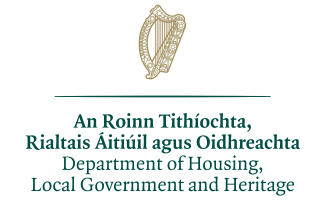At present there are no visitor facilities on Mongan Bog. We will post more on open days, guided walks and other events here and on our Facebook and Twitter pages as they arise, e.g. Heritage Week. We have organised many tours on this amazing bog.
You can take in its beauty without engaging in some bog trotting.
The bog is best-viewed from the Pilgrim’s Road, or Pilgrim’s Way, an ancient raised road along the top of the glacial ridge, or esker. From this ancient road, which brought pilgrims into (and out of) Clonmacnoise since the early seventh century, you can look down on the impressive dome of Mongan Bog. The dome may not be as high as it was when Pilgrims visited Ireland’s oldest pilgrimage site, but it is still an awe-inspiriting sight.
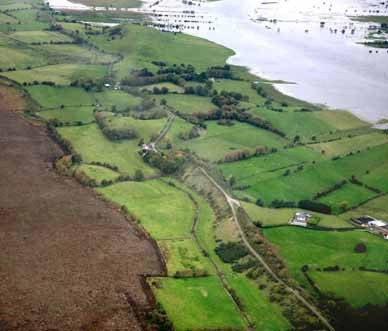 The Pilgrim’s Road offered safe passage to medieval travellers to and from Clonmacnoiseis.
The Pilgrim’s Road offered safe passage to medieval travellers to and from Clonmacnoiseis.
It leads from the monastic core eastwards through the old burial ground and dissects the New Graveyard where it heads towards the Nun’s Church; a small platform of stones known as ‘the Cairn of the Three Crosses’ is visible on its route. It is a key part of the pilgrimage route at Clonmacnoise known as ‘The Long Station’ performed on the Pattern of St Ciarán.
The Pilgrim’s Way from Ballycumber to Clonmacnoise was a part of the Pilgrim Paths Project, set up by the Heritage Council in 1997, in association with local communities, with the objective of developing a network of walking routes along medieval pilgrimage paths. The aim of the project was to raise the profile of the landscape and its heritage, built and natural that is encountered along the routes, while contributing to sustainable tourism and community development in each local area. Work on the Pilgrim’s Way was completed in
2007.
The Pilgrim’s Way demonstrates how the natural attributes of the landscape were used to benefit the development of the monastic city. The Pilgrim’s Way is a further reminder of the sacral nature of the landscape around Clonmacnoise.
You can exit at Clonmacnoise, following the ‘pointer’ signs for about 1km until you reach the rise of the road overlooking Mongan. As you stand in the centre of the road with the bog over one shoulder and the River Shannon over the other, it is one of Ireland’s most impressive sights. You are truly following in the footsteps of ancient pilgrims!
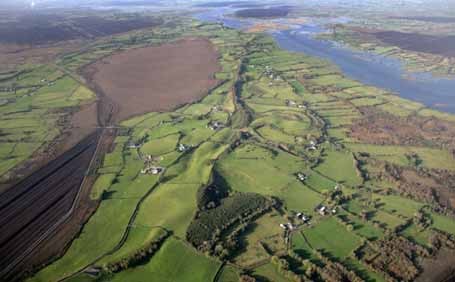
Clonmacnoise is one of the most popular and historic ancient monastic sites in Ireland. A walk amongst the peaceful stone ruins of this famous place will conjure images of the saints and scholars of Ireland’s renowned Golden Age of learning.
Founded by St Ciaran in the mid-6th century, it became a great centre of religion and learning, visited by scholars from all over the world. Many historical manuscripts, including the 11th century Annals of Tighernach and the 12th century Book of the Dun Cow, were written here.
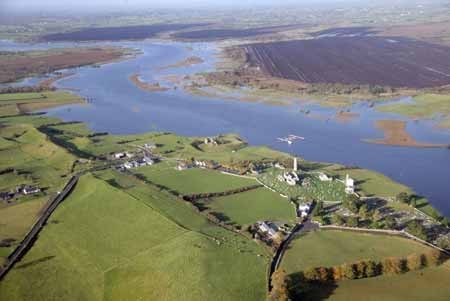
Today, the site exists as a preserved ruin under the management of the Office of Public Works and visitors can see three high crosses, a cathedral, seven churches and two round towers. The beautifully preserved structures of Clonmacnoise Cathedral, Temple Doolin, Temple Hurpan and Temple Melaghlin will impress and leave those who visit Clonmacnoise with an authentic sense of the history of Ireland.
To dig deeper into the fascinating history of Clonmacnoise, visit the on-site interpretive visitor centre, which displays a number of cross slabs and the 9th century Cross of the Scriptures. The Clonmacnoise graveyard surrounding the site continues to be in use, while religious services are held regularly on the site in a modern chapel.
Admission Prices
Adult: €8.00 | Senior/group: €6.00 | Child/student: €4.00 | Family: €20.00 |
Open all year, daily | November-Mid-March, 10:00am-5:30pm | Mid-March-May, 10:00am-6:00pm | June-August, 9:00am-6.30pm | September-October, 10:00am-6:00pm | Closed 25 and 26 December | Last admission is 45 minutes before closing.
VISIT OFFALY
For more on visiting the area, see the excellent VISIT OFFALY page on Clonmacnoise, and whilst you’re there, be sure to look around at the many places in Offaly to visit.
CROSSING THE BOGS
For people visiting Clonmacnoise, crossing the raised bogs would have been precarious as they contain permanent pools on their surface which vary greatly in depth. For this reason the eskers were preferred routes across the landscape. However, man had been interacting with this seemingly inhospitable landscape for centuries. Archaeological excavations have revealed the presence of wooden toghers (track ways) and gravel pathways across the bogs around Clonmacnoise which in many cases predate the monastery and demonstrate that the bogs were not as impenetrable as first thought.
Sadly, the drive for peat as a fuel and horticultural product has ensured that many of these have been badly damaged and/or obliterated.
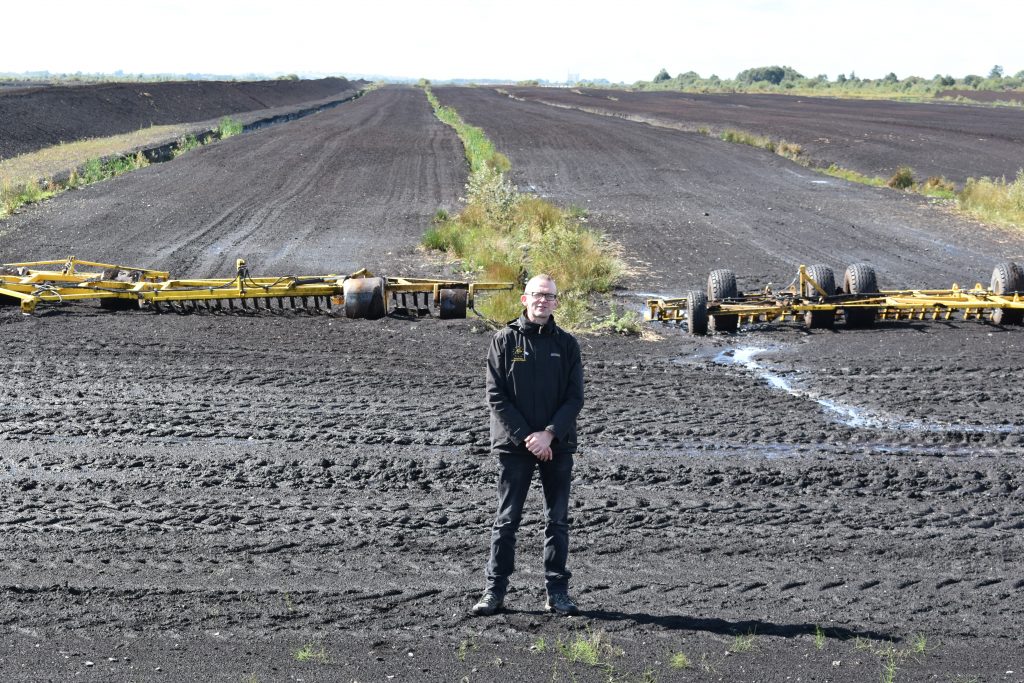
Ronan Casey from the Living Bog team stands at a typical ‘production bog’ close to Clonmacnoise and Mongan Bog SAC. in Co Offaly.
Mongan bog has been the subject of on-going intensive scientific research since 1972, and in 1978 served as a catalyst for the Dutch-Irish Bog Conservation Project which went onto become synonymous with bog conservation in Ireland.

Dr Matthijs Schouten
Matthijs Schouten, who led the project, speaks of commencing research on another research project in the summer of 1978 on the climatic impact on bog vegetation. He and his team set off to find ten intact bogs in the Irish midlands – thinking this would be an easy task in a country of supposedly bountiful bogs. However, they found it difficult to find any intact ones, with drains, fires and peat production affecting practically every site they visited.
Eventually, they found eight relatively intact sites, but the team were dismayed at the seemingly relentless destruction of Ireland’s peatlands. To lift spirits, the research team decided to visit the monastic site of Clonmacnoise.
As they arrived they couldn’t help but notice a small raised bog they had missed on aerial photographs and maps. They decided to survey the site.
“What we found was the most beautiful bog that we had ever seen up to then. Never before had we seen such magnificent pool systems, such splendid Sphagnum lawns and hummocks; never before had we walked a bog that was so difficult to cross due to its wetness. We did not reach Clonmacnoise that day…”
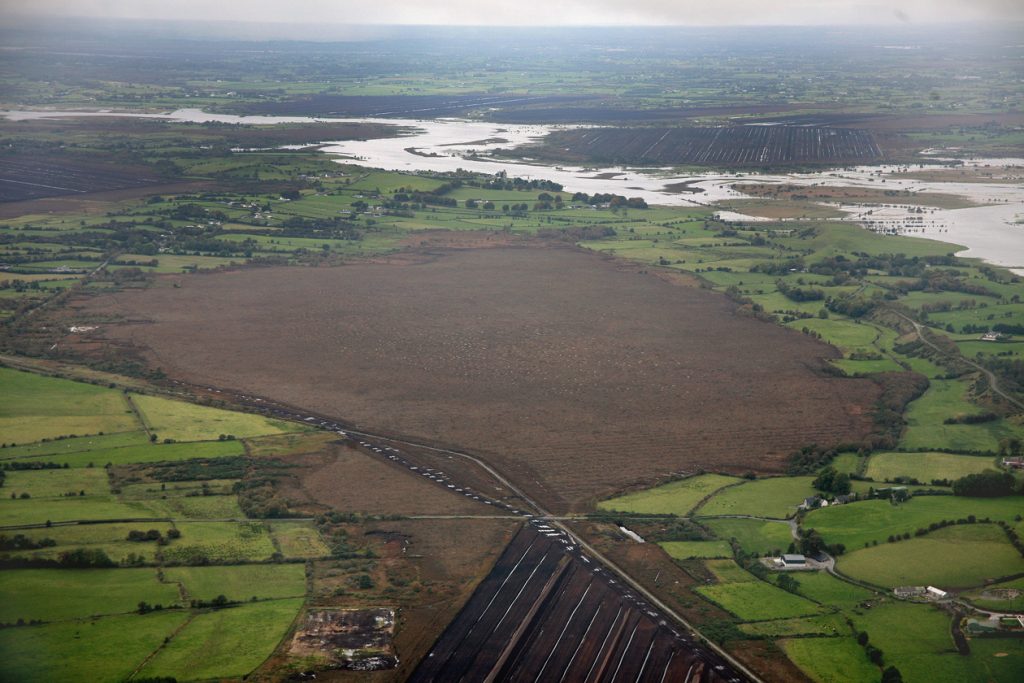
Mongan Bog, with Bord na Mona rail line to Shannonbridge Power Station running alongside (right hand side in this pic). Drains had been dug on Mongan to dry it out prior to its ‘removal’ to the power station…
But on the bogs Western end was a machine, with drains dug. They contacted Professor John Moore who in turn contacted Bord na Mona who in turn declared that “Mongan will survive.”
A land swap deal was done with An Taisce, and they became the new owners of Mongan Bog. The intervention was key. According to Kelly et al in 1995, Bord na Mona had intended to extract peat from the bog, and had inserted drains at both ends in 1978. The eastern and western drains were dammed by Groundwork volunteers working for An Taisce between 1984 and 1986 and as part of an ECO training course in 1986.
Writing in ‘Celebrating Boglands’, published by the IPCC in 2002, Dr Schouten says: “Looking back, I think this is where it all began. This completely unexpected success in saving Mongan Bog was the basic inspiration for the ‘battle of the bogs’. It gave hope, confidence and above all enthusiasm.”
Soon after the Dutch Foundation for the Conservation of Irish Bogs was formed.
Another visitor who was very excited about Mongan was well known UK personality Dr David Bellamy who came here on his honeymoon, before large-scale peat exploitation and extraction started on the nearby Blackwater Bog complex. He declared it to be the most exciting event of his honeymoon!
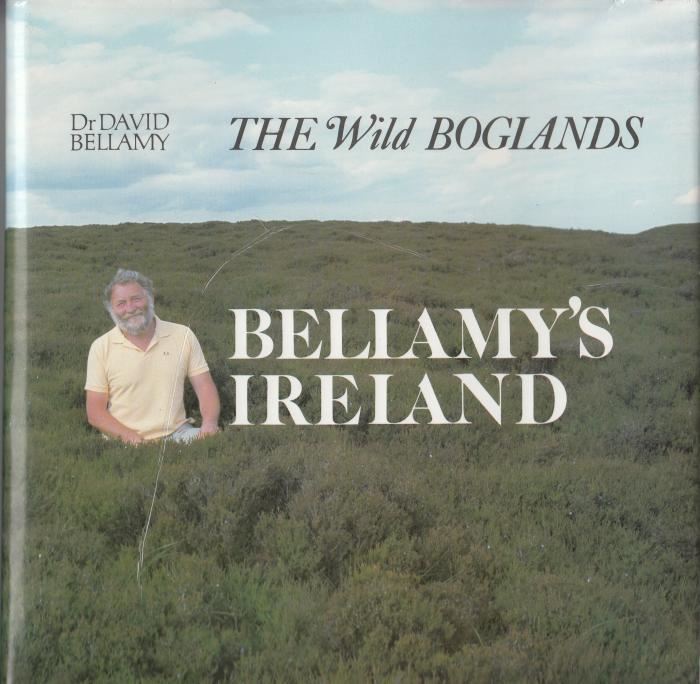
The cover of Dr David Bellamy’s ‘The Wild Boglands – Bellamy’s Ireland’. An essential read when it comes to bogs.




